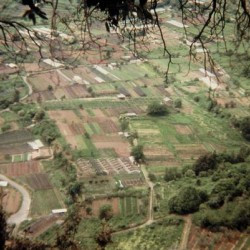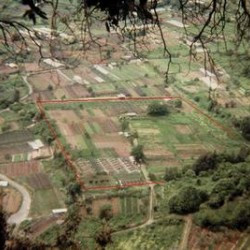Jona Lendering
Jona Lendering read history at Leiden University (MA 1993), specialized in Mediterranean culture at the Amsterdam Free University (MA 1996), and worked at excavations in Holland (Riethoven) and Greece (Halos). After teaching historical theory and ancient history at the Free University for several years, he was one of the founders of a school for history teaching, Livius Onderwijs. Born in Amsterdam, it has now spread to auxiliary locations in Bussum, Dronten, Gouda, Haarlem, Hoorn, Schagen, Zaanstad, and Zoetermeer. As of 2013, Livius Onderwijs has eight teachers, about 500-600 students a year, and offers tours to countries like Italy, Turkey, Iran, and Lebanon. The field trips help to etch into the students' minds some of what they've learned at the school.
Because history is for a large part telling a story, something you do best in your own language, Lendering prefers to publish in Dutch journals. However, he has contributed to the Bryn Mawr Classical Review and Ancient Warfare, while he is the founder of Ancient History Magazine. He is also the publisher and editor of the on-line publication of the Babylonian Chronicles of the Hellenistic Period, a set of important cuneiform sources for the history of the Seleucid and Parthian Near East, transcribed, translated and commented on by Bert van der Spek of the Free University Amsterdam and Irving Finkel of the British Museum. A publication as book is in preparation.
Lendering has written several books and maintains a blog in Dutch. He is the author of several books, including Edge of Empire and Consensus and Crises. For the Livius website, which has received several awards, he collaborates closely with Bill Thayer of LacusCurtius. Lendering is also the webmaster of two daily blogs, the MainzerBeobachter.com and Grondslagen.net.
There are 9380 items in Jona Lendering:
Aricia
Aricia: ancient city in Latium, modern Ariccia. The temple terrace Aricia was situated near the sixteenth milestone of the Via Appia on…

Aricia, temple of Diana, Terrace |

Aricia, temple of Diana: the red line indicates the terrace |
Ariobarzanes (1)
Ariobarzanes I (Old Persian: *Ariyabrdna): Persian nobleman, member of the Pharnacid dynasty, between 387 and 363/362 satrap of Hellespontine Phrygia. Portrait…Ariobarzanes (2)
Ariobarzanes (Old Persian: *Ariyabrdna) (†330): Persian nobleman, satrap of Persis, defended the Persian gate against Alexander the Great. Portrait of an…Ariobarzanes I Philoromaeus
Ariobarzanes I Philoromaeus (c.95-62): king of Cappadocia. Ariobarzanes I Philoromaeus of Cappadocia Relatives Son: Ariobarzanes II Philopator Main deeds 101: After he has killed his nephew Ariarathes…

Ariobarzanes I Philoromaeus of Cappadocia, coin |
Ariobarzanes II Philopator
Ariobarzanes II Philopator (62-c.51): king of Cappadocia. Ariobarzanes II Philopator Relatives Son of Ariobarzanes I Philoromaeus Father of Ariobarzanes III Eusebes and Ariarathes IX Philadelphus Successor of: Ariobarzanes…Ariobarzanes III Eusebes
Ariobarzanes III Eusebes (c.51-42): king of Cappadocia.Relatives Son of Ariobarzanes II Philopator Successor of: Ariobarzanes II Philopator Main deeds 51: Succeeds his father Is able to withstand the high priest of Comana, Archelaus Supports Pompey the Great in his war against Rome 48: After Pompey's defeat at Pharsalus against…Ariobarzanes
Ariobarzanes: king of Armenia (r. c-2-4 CE).In about 8 BCE, Tigranes IV succeeded his father Tigranes III as king of Armenia. He embarked upon a pro-Parthian policy, which was unacceptable to the Romans and causing some diplomatic exchanges between the…Ariobarzanes of Pontus
Ariobarzanes: king of Pontus (r.266-c.250 BCE).Ariobarzanes was the second king of Pontus, but he is little more than a name. He was a son of Mithridates, the founder of the kingdom, and continued his father's policy of collaboration with the…Arion
Arion (late seventh century BCE): Greek poet from Methymna on Lesbos.Life Arion (Mosaic from Ostia) Little is known about Arion’s life, although…